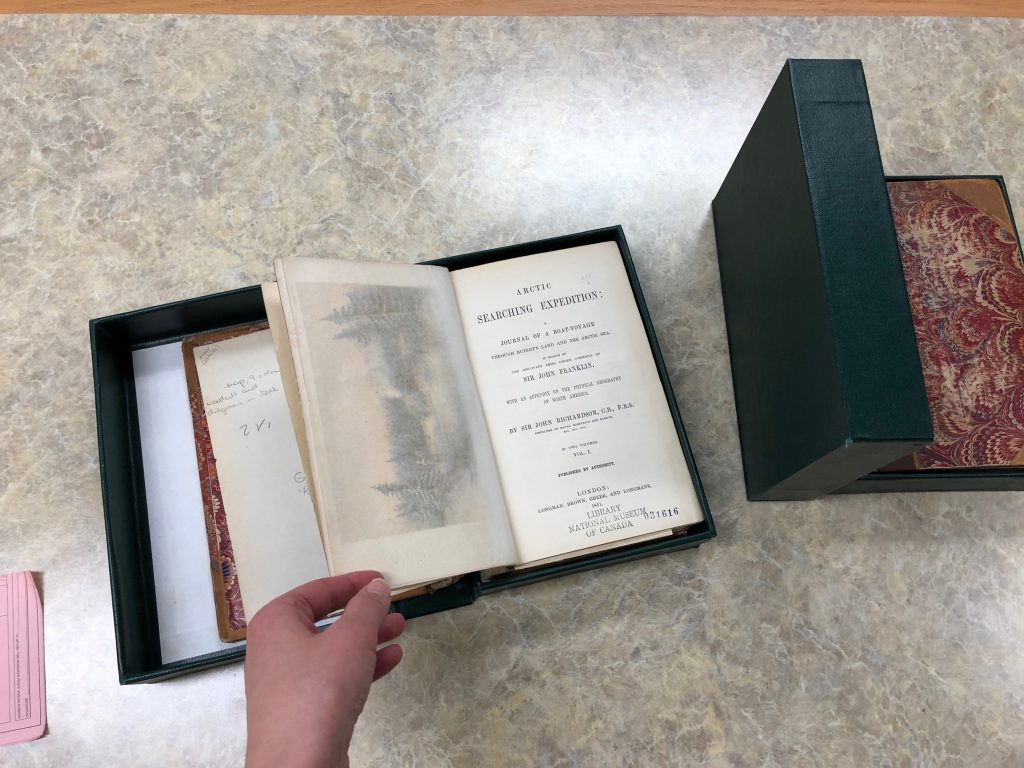Nature museum digitizing vast library of historic knowledge
By Liz Rodriguez
The Canadian Museum of Nature’s library has embarked on the painstaking process of digitizing tens of thousands of items in its collection. The museum wants to open up more of the collection to researchers worldwide and make it more useful for the 2,000 researchers who visit the online resource every month.
The digitization project is being carried out in collaboration with the Biodiversity Heritage Library, a global project to put biodiversity information online to promote knowledge and conservation of species.
The McLeod Street museum’s library in Gatineau includes more than 36,000 books and 2,000 periodical titles. It is also in possession of a rare book collection consisting of 4,000 pre-20th century monographs, manuscripts and periodicals that cover expeditions, natural history, as well as biological and earth sciences dating back to the 1500s.
The collection encompasses studies on botany, zoology, minerology and paleontology.
“Someone who doesn’t live nearby wouldn’t have access to this collection,” said Elizabeth Smith, acquisitions and cataloguing officer of the museum’s research and collections department.
Having a digital version reduces handling of the original and ensures that its valuable information will not be lost if the physical copy is ever damaged, said Smith.
One of the benefits of going digital is that it allows more people to use the same book at once, anywhere in the world. Researchers can even download the book to a device to access it while doing fieldwork.
Despite the lack of resources to scan such sensitive materials, the BHL staff want to make sure that users get access worldwide, said Smith. In this way, they will also contribute to the online repository as the first Canadian affiliate partner of the BHL global community.
To scan the collection, they use basic materials such as a photocopier, a flat-bed scanner and a digital camera. In the photo lab they set up a book cradle and lighting to photograph books page by page.
“It takes hours to scan, edit, and upload each book,” said Smith.
In deciding what to digitize first, the library considers the level of interest and usefulness of the material. To preserve the most sensitive and rare books, the library stores them in rooms with lower temperature, keeping them in high humidity levels.
For any digitization in public domain, there are strict copyright guidelines that must be followed.
“The size and format of the material will dictate which type of scanner will be used to capture the information. For example, a large sheet map uses a different scanner than a textbook,” said Lynda Finn, who works in the department of cataloguing and collection maintenance at Carleton University’s library.
While other libraries are active in digitization, the museum’s library is falling far behind.
The library staff is looking for ways to get financial help to upgrade their equipment. For now, the process of digitization is going at a slow pace and will only be done on request. The project started in the summer of 2017 and just about 80 books of their collection have been uploaded since then.
“Our collection is indexed in two ways: we have an online catalog which is available to the public and can be accessed anywhere with an Internet connection. We also have materials on card catalogs… this is not on the online catalog,” said Smith.

